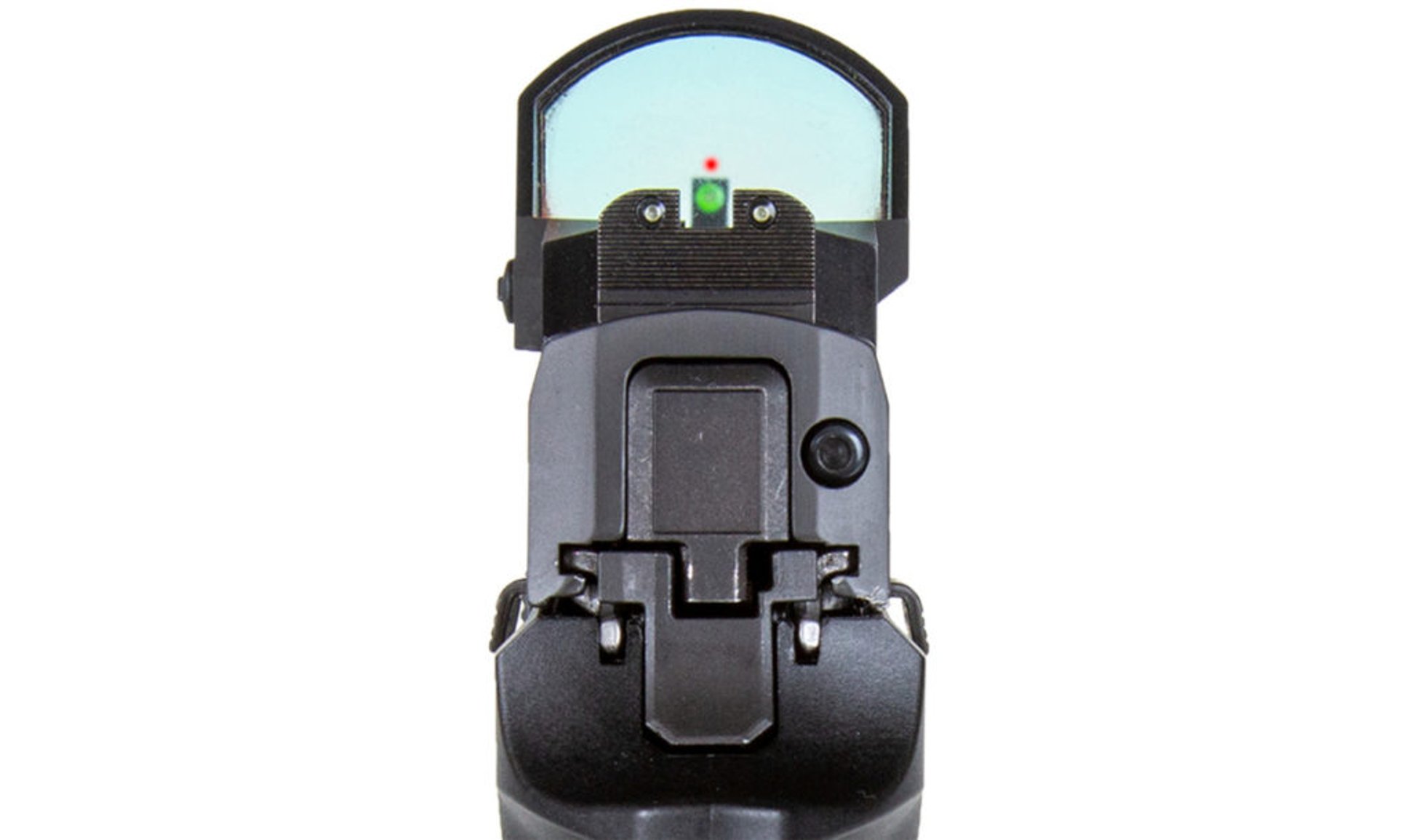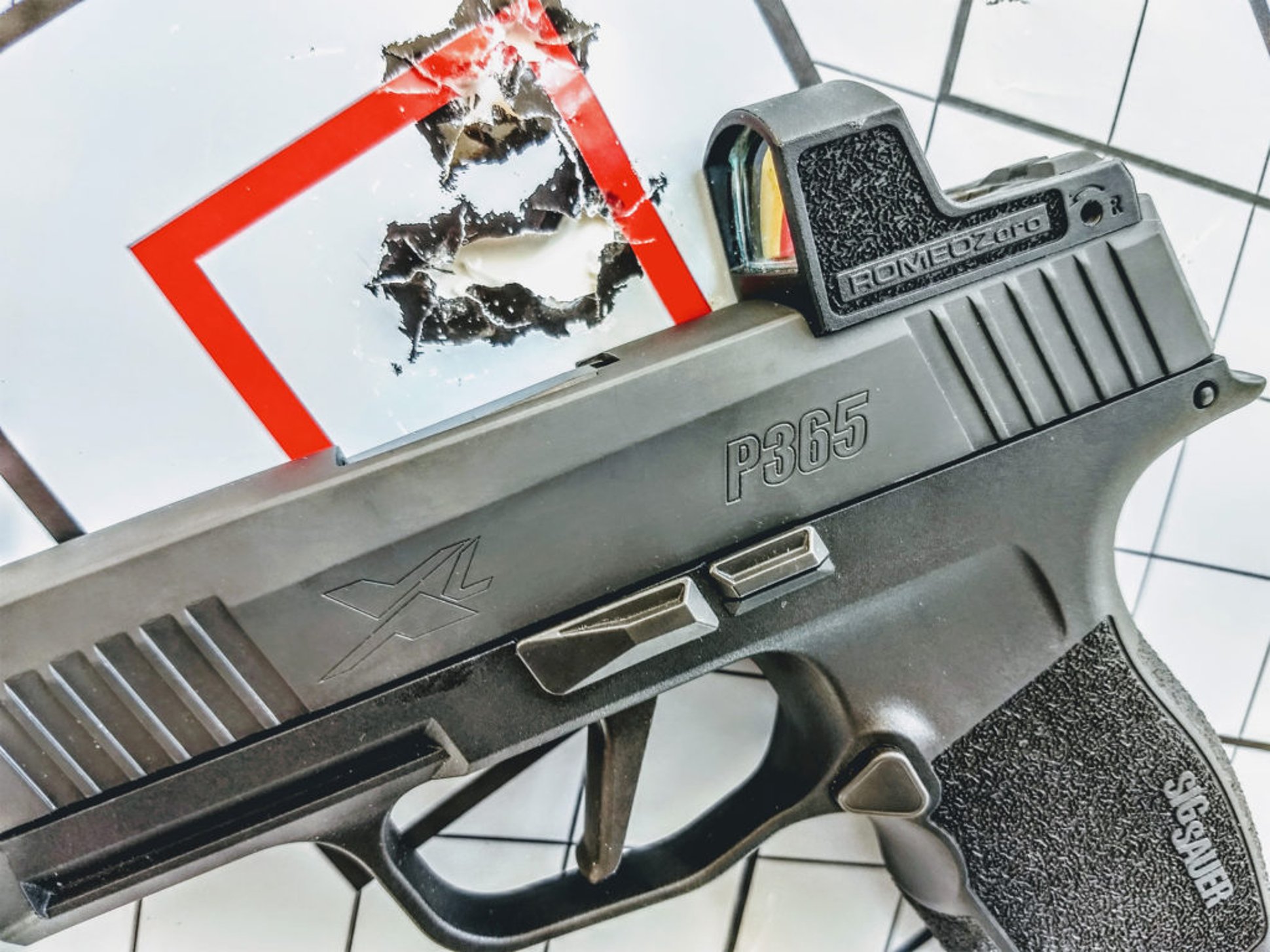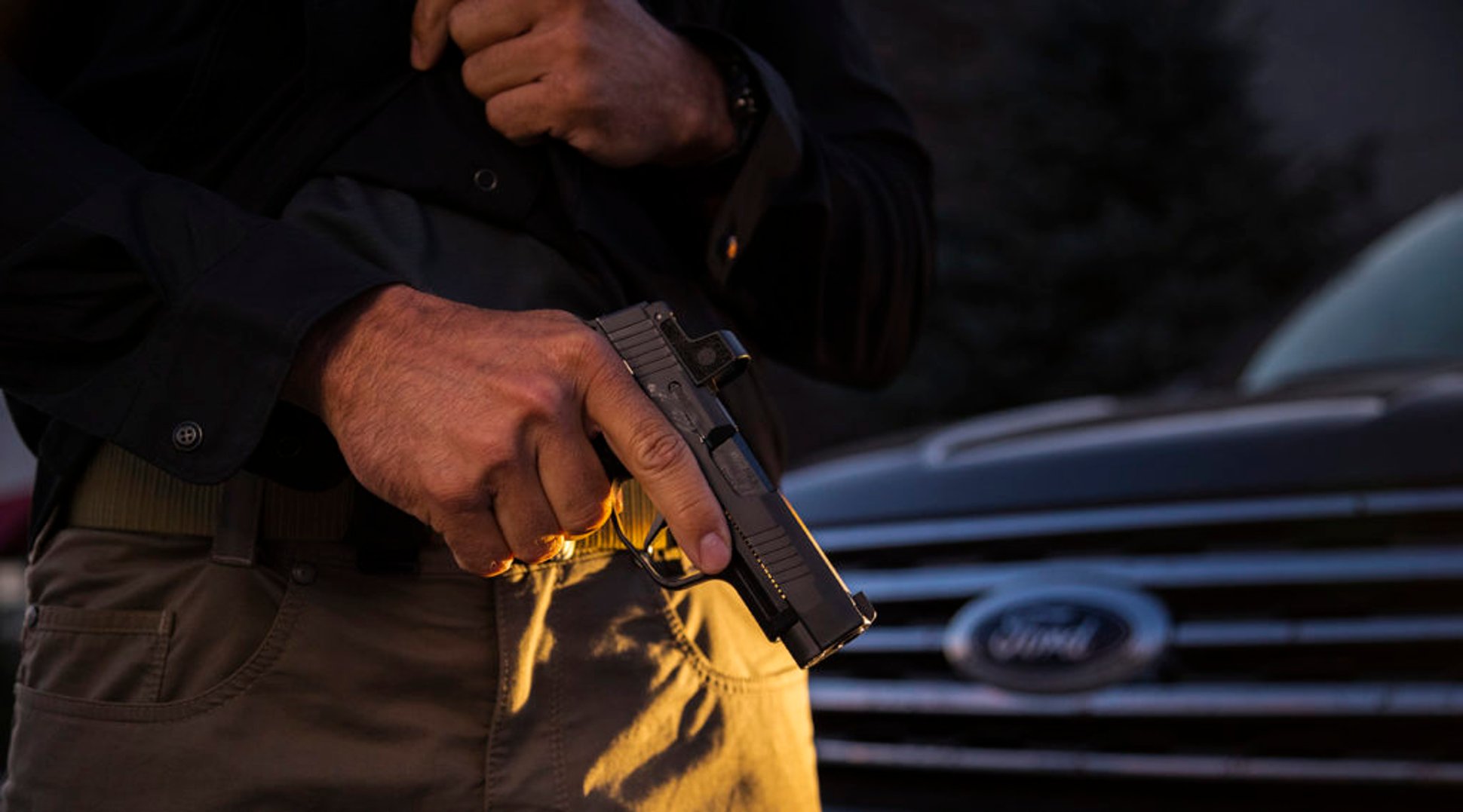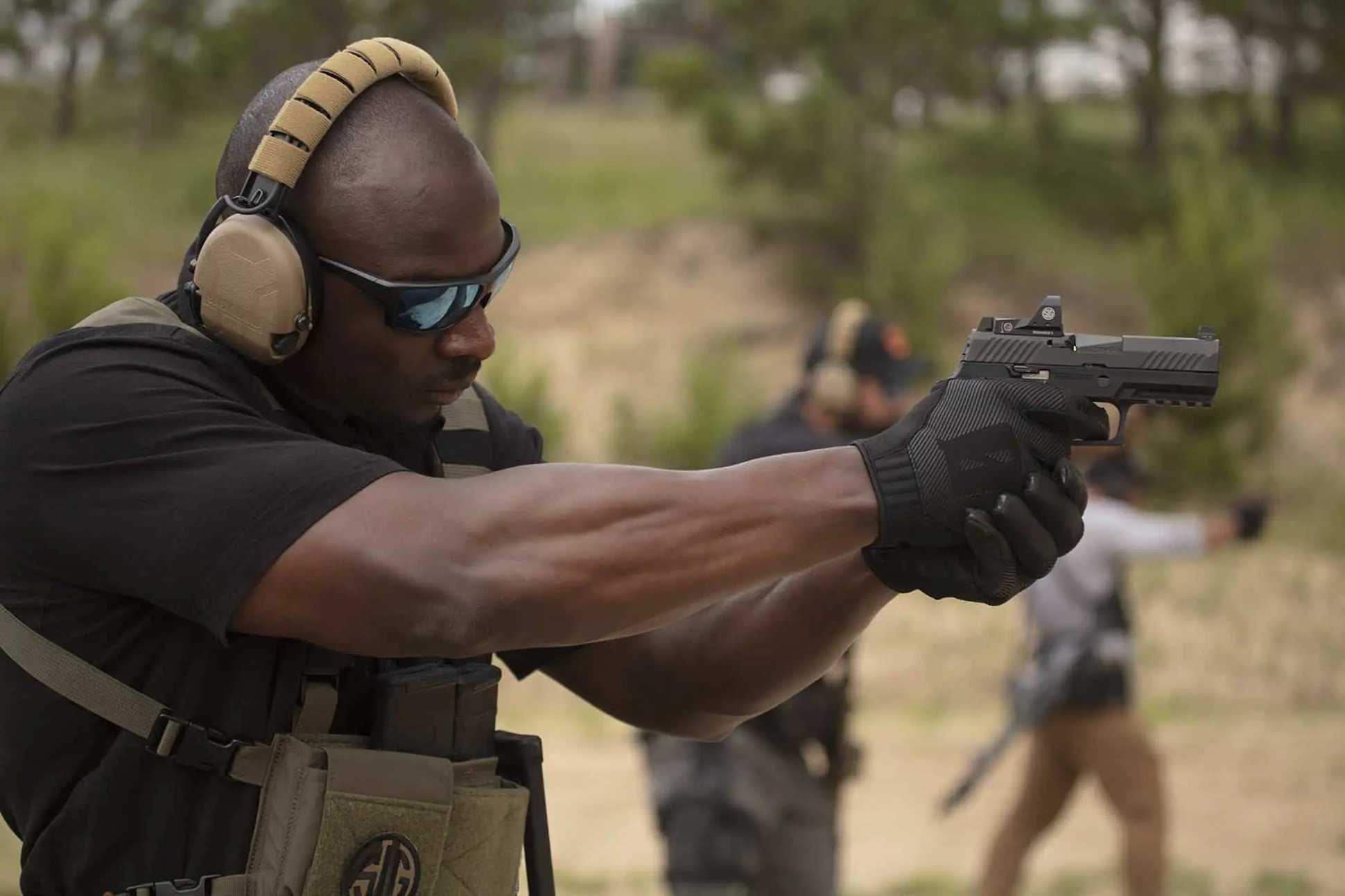Click to listen to the audio version of this article.
Red dots don't have to be a problem. And Sig Sauer Romeo Zero Optic makes it easy for gun owners.
I popped open the lid on the Sig Sauer pistol case, looked over my new P365 XL 9MM handgun, and my first and strongest reaction was: “Finally!”

As in, a gun and optics maker had finally ended the red-dot mounting nightmares I’d experienced in the past. Here it was, a new P365 XL with Sig’s own Romeo Zero optic already attached and zeroed. Pop in the battery, and I would be ready to start shooting.
Yes, many gun makers offer “optics-ready” handguns, which usually means a semi-automatic pistol with a removable plate at the rear of the slide. Unscrew and lift off the plate and attach your optic to the cut out area under the plate.
Easy, huh? Occasionally.
In reality, you often must track down an adapter plate that fits between your optic and the space created when you remove that plate. I’ve also discovered that a number of “optics-ready” models don’t come with, or even offer, adapter plates. Then, you have to hope the company making the handgun optic provides adapter plates for your particular firearm.
And they may not.
If your pistol is not optics-ready, you may have a very long haul ahead of you.

Past Experience with Red Dots
My first red dot went onto a PARA 1911 10MM I wanted to use for deer and hog hunting. The instructions said the red dot would fit my PARA and that the adapter plate would go on easily.
Yes, it fit, but, no, the process was not easy.
I had to tap out the rear sight on my 1911, and then I tried to get the wedge at the bottom of the adapter plate to fit into the opening created by the missing rear sight. But the opening was too tight for the adapter plate.
I took PARA, red dot, and adapter plate to a local gun smith. Two hours, $80, and lots of swearing later, he had the adapter plate mounted. He ended up having to file down the piece that was supposed to fit in the rear sight gap. “If you ever want to change out that red dot, take it to someone else, okay?” was all he said after he took my cash.
I’ve pretty much avoided red dots on my handguns ever since.
Bringing Red Dots into the Present
Red dot optics fall under the heading of “reflector sights.” Generally, the lens of a red dot, like Sig’s Romeo Zero, had a tiny red dot projected onto it. When looking through the lens, the shooter places that dot onto the target, pulls the trigger, and has a hit. Once the red dot has been zeroed, of course, and assuming the shooter’s mechanics are good.
Red dots have several advantages over traditional iron sights. The shooter needs only to place the dot onto the target, as opposed to iron sights where one must align the rear and front sights. The latter takes more time, plus reduces the shooter’s field of view to the sights and what is directly in front.
With a red dot, though, the shooter can keep both eyes open and can easily see to the sides of their targets—very important in self-defense and tactical situations. It also lets a shooter get on target faster than iron sights.

Beginning with the Military
Sig Sauer didn’t invent the red dots so popular with today’s shooters. That particular invention came out decades ago, with the military using red dot or reflector-type sights since World War I, according to Wikipedia.
But Sig is at the leading edge of today’s red dot technology and the “interface” between handgun, optic, and shooter.
Simply put, Sig now offers its high-quality pistols already paired with a high-quality Sig red dot, saving the consumer/shooter time, frustration, and a considerable amount of money.
“Sig Sauer is the only company who can truly integrate an optic and handgun together in a single system that is zeroed and ready to shoot right out of the box,” says Jason Wright, Sig’s senior director of brand management. “Our handgun and the attached optic are designed to work together, so you get greater performance and increased accuracy in a way that is radically simple.”
Sig's Internal Revolution
Founded in Switzerland over 150 years ago as the Swiss Industrial Company—Schweizerische Industrie-Gesellschaft—and known worldwide as SIG, opened an importing facility in the United States in the 1980s. As demand for Sig firearms grew in the U.S., in 2007 Sig built a facility in Exeter, New Hampshire, that included state-of-the-art manufacturing capability. Currently, Sig Sauer employs over 1,200 people at its New Hampshire manufacturing facility and corporate headquarters.
Today, Sig Sauer provides the U.S. Army with the SIG P320 9MM pistol; its handguns are used by thousands of law enforcement officers, too. We civilians use our Sig pistols for everything from concealed carry and home defense, to hunting and just plinking.
In 2015, Sig also launched its Electro Optics division. Today, it makes everything from rifle scopes and binoculars, to thermal optics, rangefinders, and, yes, red dot sights.
The Sig P365 XL I have uses Sig’s Romeo Zero red dot, which Sig designed for slimline, micro-carry pistols like the P365. It boasts an amazing 20,000 hours of battery life. Additionally, it's lightweight but still resists drop damage. Finally, it features a polymer housing and a molded polymer aspheric lens.
Currently, Sig only offers the pistol-Romeo Zero package with the P365 handgun though it is certainly available for separate purchase. However, a number of models in the Sig P320 full-sized pistol line can be had with the Romeo1Pro red dot, as can certain P226 and P229 offerings.
Final Thoughts
Made for duty-sized pistols, the Romeo1Pro is built with an aircraft-grade aluminum housing. A protective steel shroud is also available. The red dot can be had with a 3 or 6 MOA aiming dot. It's finished in Black or FDE. The unit features Sig’s MOTAC motion-activated technology. This allows it to shut off after two minutes, but it comes back on as soon as you pick up the pistol. It also has 12 manually adjustable brightness settings, including two Night Vision settings. “We will continue expanding that number throughout 2020 and 2021,” Wright says. “It will include many classic line pistols as well as additional models of the P320 and P365 family.”
These optics/pistol packages cost less than buying each separately and spending time and money to have the optics installed.
If you’ve put off getting a red dot because it all looked too complex, Sig Sauer has taken the nightmares out of red dots.

Red Dot Tips
New to the Red Dot Revolution? Scott Reidy, Sig Academy Director, has some suggestions and ideas.
- “The number one complaint heard from first-time red dot shooters: it’s hard to find the dot,” Reidy says. “This comes from being sight focused and not target focused. This is easily corrected by keeping both eyes open, focusing on the target, and bringing the sights up to eye level.” New shooters, he notes, seem to have an easier time using red dots than veteran shooters who are used to iron sights. However, “Once these vets learn to focus on the target and break the shot as soon as the dot crosses the hit zone, they are more successful, more comfortable.”
- Get some training with your new red dot-mounted Sig pistol. Reidy recommends at least eight hours of training with 400 rounds put through your new handgun. The Sig Academy offers three red dot training courses: Mission Red Dot; Red Dot Domination; and Pistol Mounted Optics Instructor.




